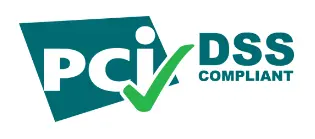One of the essential aspects of GST is the concept of credit notes, which play a significant role in adjusting the taxable value and tax liability of transactions. It is issued against the tax invoice when the value of goods or services is declared higher than their actual value, the tax declared exceeds what is applicable, the quantity received is less than invoice, or the quality delivered is unsatisfactory, prompting a partial or total reimbursement of the invoice value.
What is Credit Note Meaning?
A credit note is a document issued to adjust or bring down the supplier’s tax liability about errors or exclusions from the original tax invoice. It includes all relevant information, such as the original invoice, the amount credited, and the reason for issuing the credit note.
Now that we have understood what is credit note, let’s now move forward with the main reasons for issuing a credit note.
Reasons for Issuing a Credit Note
Credit notes are issued under various circumstances:
- Return of Goods: When a consumer returns goods or services due to defects, damage, or other issues, a credit note is issued to reverse the original sale.
- Price Reduction: A credit note may be issued when the original invoice price for goods or services is subsequently reduced. This document serves to adjust the invoice to reflect the lower selling price.
- Quantity Discrepancy: If there is a discrepancy in the quantity i.e., if the quantity of goods delivered is less than the quantity billed, a credit note is issued to adjust the invoice value.
- Discount or Allowance: If a discount or allowance is granted to the customer after the original invoice is generated, a credit note is issued to reflect the price change.
- Error Correction: With humans, there is always a possibility of errors occurring while generating invoices, such as incorrect pricing, calculation mistakes, or wrong GST rates, the issuance of credit notes is used to rectify errors in such cases.
Examples of Credit Note
A credit note is typically issued when the amount in the original invoice needs to be adjusted. The following are credit note examples:
Example 1: Return of Goods
A seller who handles the sale of returns also handles the adjustment of sales, in effect, when a customer brings back goods because they have defects, were damaged in transit, or simply do not satisfy a complaint made. In such cases, the seller provides the buyer with a credit note acknowledging the returned products. For example, when a buyer orders 100 shirts and delivers them, except that some have gotten spoiled, the seller will furnish the buyer with a credit note of the damaged shirts and this will reduce the amount owing.
Example 2: Price Adjustment
Price adjustment occurs after the issuance of an invoice whereby the seller changes the amount charged for the goods and sells at a discount. A credit note is raised when after an invoice has been raised the seller allows the buyer a discount or negotiates the price for the buyer lower than the seller’s original price to cater for the markdown. This ensures that the supplier’s tax invoice for goods and services is accurate and compliant.
Example 3: Mistakes Made by Coders
When there are mistakes in the primary invoice document, such as in the case of quantifying items and unfair prices, there will be a need for a credit note in order to make corrections. If the credit note pertains to 50 units but the original invoice pertains to 100 units, an additional credit note for the remaining 50 units will be issued.
Example 4: Tax Rate Revision
Where there has been a wrong GST rate in issuing the original invoice, the GST credit note gives an adjustment in the tax computation. When a higher-than-appropriate GST has been applied by the seller with respect to the item, an adjusting credit note will be raised on the appropriate rate charged. This is done to ensure the relevant figures find their places in the general and tax returns ledgers.
Steps to Create a Credit Note in GST
A credit note can be created in Excel, word, or any other software used for invoice creation by the business organization. Follow the steps below to create a credit note:
- Select a template for the credit note.
- Place the business logo
- Mention the credit note issue date and the unique credit note number
- Include the invoice reference number for which the credit note is being issued.
- Include the GSTIN of both the supplier and customer and the place of supply
- Save the credit note
Process of Issuing Credit Note in GST
Know the process of credit note issuance with the following example:
Suresh is a supplier of electronic items who delivers them to Ramesh along with a tax invoice.
Ramesh is dissatisfied with the quality of the delivered products and returns them with a debit note.
Suresh accepts the debit note and issues a credit note to acknowledge Ramesh’s concerns.
What is the Time Limit for Credit Note in GST?
It is essential to know the time limit for credit note in GST, it should be declared in the GST returns filed for the month in which it was issued. As per the GST laws, the maximum time for declaration of the credit note in GST returns in a specific financial year should be either of the below dates, whichever is earlier:
The date of filing the annual return of the concerned period:
September 30th of the next year when supply was made.
The details mentioned in the credit note issued must be submitted in the respective month in GSTR-1.
However, if the credit note is generated earlier, it can be revised and must be reported in the monthly GSTR-1. These details will automatically reflect in the GSTR-2B and GSTR-2A of the one receiving it.
A supplier can change his originally issued tax invoice and reduce his tax liability without the need to claim any refund.
GST Credit Note Format
There is no defined format for the credit note under any law. However, the supplier must contain the following information in a credit note.
- Business name, address, and GSTIN of the supplier
- Type of document — debit note or credit note
- A unique 16-character serial number containing numeric, alphabetic, alphanumeric, or specialized characters
- Date of issuance
- The taxable amount of supply, rate, and tax credit to the buyer
- Supplier or his authorized representative signature
We have now understood the credit note format in GST, let’s move further with understanding how can Tax Liability be Adjusted in Credit Notes in GST.
How can Tax Liability be Adjusted in Credit Notes in GST?
A supplier can reduce his tax liability using the credit note in GST, provided it is issued on or before the last date of September. After the credit note is issued, the supplier’s tax liability is reduced if the following details match:
The amount of the input tax credit claim for the buyer‘s return is the same, along with the time period.
The duplicate claim is the same.
If both output tax liability and input tax credit claims are the same, this will be communicated to the supplier. It is important to note that in case of a change in tax and interest from a transaction is shifted to another registered person, there will be no reduction in the output tax liability of the supplier for that transaction.
If in case there is a discrepancy in the output tax liability and the claim amount for an input tax credit, or the recipient has not declared the credit note in their returns, this will be communicated to both parties. If this is not rectified in the same month as communicated, the output tax liability in the return will be adjusted accordingly for the next month.
The buyer can claim input tax credit by paying the supplier for the goods and services received within 180 days of the invoice date. If the buyer fails to do so, the credit amount will be added to their output tax liability.
GST filling can help you claim the input tax credit and avoid penalties. You can use the EnKash platform to pay GST using any credit card in easy steps and avail of additional rewards from the card issuer, an interest-free credit period of up to 52 days, and healthy working capital and cash flow management.
When is a Credit Note in GST Issued?
It is worth noting that a credit note can be issued only given some specific conditions or situations such as when there is no need to pay the total amount in the tax invoice and also in cases where correction of mistakes is required. Below are the conditions under which credit note should be issued in GST :
1. Return of Supplies
A credit note must be issued by the seller if the goods or services were partly or wholly returned by a recipient due to defect, damage, or any other discrepancy in product quality or specification. For instance, in the instance a customer orders electronics and a few of the objects are broken, the seller would provide a return credit for the broken pieces.
2. Post-Sale Discounts
There are instances when a seller may reduce the prices of goods sold to certain clients after the clients have already received an invoice. In the case where the discount is offered after the sale but it affects the taxable amount, the seller issues a credit note. For example, the supplier may offer lower prices for bulk purchases after sending out an invoice which leads to a credit note.
3. Supply Cancellation
In case of cancellation of the supply of goods or services, after the original invoice is raised, a credit note needs to be raised to adjust the tax liability. For example, when a customer places an order but cancels it before the goods have been shipped, the seller will credit the buyer with a note that cancels the sale together with any tax that is involved.
4. Incorrect Tax Charged
Instances whereby a credit note is issued because the original invoice contained an amount for tax that was greater than the actual amount legally charged will be highlighted. For instance if in the process of making sales the seller issues tax-inclusive figures which are erroneous, the seller would issue a credit note to make amendments to the tax value.
Time Limit to Issue a Credit Note
As far as the credit notes are concerned, the laws of goods and service tax provide certain time limits within which the credit notes must be issued. These time limits are useful for both the taxpayers and the revenue authorities in controlling the adjustments properly.
1. Closure of Financial Year
A credit note is to be issued by the fall of the following whichever is applicable:
September 30 of the following financial year, after the year in which the supply was made.
Date when the annual return of the relevant financial year is filed.
Suppose, if the invoice was raised in 2023-24, a credit note shall be issued on or before September 30, 2024, or before the due date for filing of annual return for the year 2023-24. This is to make sure that the adjustments are made within the right period of tax.
2. Practical Implications
The time allowed to issue credit note also provides the opportunity for such businesses to alter their GST liability in the same financial year. Otherwise, risks of penalties, disallowed deductions, or inconsistency in tax returns arise with respect to such credit notes issued outside this period. In this sense, monitoring the return dates of such businesses is crucial for compliance purposes.
Importance of Credit Note in GST
- Adjustment of Tax Liability: If a supplier for some reason ends up declaring an excess amount in the tax invoice initially then these credit notes enable suppliers to rectify discrepancies in invoice amounts, thereby reducing their tax burden. This process contributes to maintaining accurate tax records and prevents suppliers from overpaying taxes.
- Customer Satisfaction: If a customer raises discrepancies or issues regarding the quality or quantity of goods or services delivered, suppliers can resolve them by issuing credit notes. This fosters trust and satisfaction among customers.
- Compliance and Record-Keeping: For any business registered under GST, compliance with GST regulation is of utmost importance and proper issuance and recording of credit notes help in maintaining compliance with these regulations. It ensures that all transactions are documented accurately, reducing the risk of audits and penalties.
- Financial Accuracy: If there’s a discrepancy in the invoice amount and it is not recorded in the books, then it can later create gaps while calculating revenue and tax, credit notes contribute to this aspect by ensuring that revenue and tax calculations reflect the true value of transactions. This is vital for financial reporting and analysis.
Legal Framework
The issuance of credit notes is governed by the provisions of the Central Goods and Services Tax (CGST) Act, 2017, and the State Goods and Services Tax (SGST) Act, 2017. Section 34 of the CGST Act outlines the conditions under which a credit note can be issued.
Conditions Which Must Be Satisfied for Issuance of Credit Note in GST
Issuing a credit note is not simply an exercise of making simple adjustments; some conditions are prescribed by the GST law. Credit notes should only be issued if the following conditions are met.
1. Tax Liability Adjustment
The credit note should directly relate to the taxable and or taxed amounts of the original invoice. Tax liability of the original transaction shall also be adjusted through the credit note. For example, in the case when the invoice was billed credit note would be issued to revise the taxable value as well as the GST.
2. Reconciliation of GSTR-1 and GSTR-3B
The summary of the credit note must be reflected in both returns i.e. GSTR-1 and GSTR-3B. In GSTR-1, the details related to the credit note issued are given by the taxpayers which reduces the taxable value on which GST is charged. Then adjustment is made in GSTR-3B under net GST liability. Failure to reconcile the credit note with returns may result in tax issues and severe penalties.”
3. Record of the Recipient
For the credit note to be effective, the recipient must also complete this process and have the credit note on record. If the recipient is a GST registered recipient they must also update their records and seek to recover the input tax credit ITC on the amounts that were revised on the invoices after the credit note has been raised. This will eliminate any misalignment for how both parties view the changes.
4. Timely Issuance
The issuance time limit of a credit note must be respected, that is, not later than September 30 of the subsequent financial year or before the due date of the annual return. Failure to act within this period in respect of a credit note may render the adjustment or input tax credit unavailable thus putting the business in a state of non-compliance.
5. Accurate Documentation
For the credit note to be valid, it must include certain details such as:
The number of the original invoice and the date when it was issued.
The reason for the credit note issuance (for example, return of goods, or a discount given).
The amount that is to be adjusted, including that of the GST. These details ensure that the credit note is properly referenced and that the tax authorities can verify the adjustments.
Difference between Credit and Debit Note
While credit and debit notes are both used to make adjustments to invoices, they serve different purposes:
Basis |
Credit Note |
Debit Note |
Purpose |
Issued when a supplier overstates the value of goods or services on the original invoice or when a supplier charges more tax than was applicable on the original invoice. |
Issued when the value of goods or services declared in the tax invoice is less than the actual value, or when the tax charged is less than applicable |
Usage |
Reduces the supplier’s tax liability and the amount payable by the buyer. |
Increases the tax liability of the supplier and the amount payable by the buyer. |
Scenario |
Credit notes are issued when goods are returned due to defects or when a discount is offered after the invoice is raised. |
Debit notes are issued when there is an additional charge for goods or services after the initial invoice or when the initial invoice underreported their value. |
Understanding the differences between credit and debit notes helps businesses manage their financial transactions more effectively and ensures compliance with GST regulations.
Credit Note Recordkeeping
It is vital for both the supplier and the recipient to keep a record of the credit note for up to 72 months. This period begins from the date due for presenting the annual return for the year that requires submission of certain documents.
Businesses must not rely on the manual keeping of credit notes as it comes with a high risk of misplacement and being torn. It should be stored well digitally and at every business-related place as mentioned in the certificate of registration. Digital storage enables easy access to all the stakeholders involved.
Common Mistakes and How to Avoid Them
Delayed Issuance
Issuing credit notes after the stipulated time limit can lead to non-compliance. To prevent this, businesses should regularly review transactions and issue credit notes promptly.
Incorrect Details
Incorrect details on credit notes can cause discrepancies in financial records and GST returns. Businesses should ensure that all required particulars are accurately mentioned on the credit note.
Non-Reporting in GST Returns
Failing to report credit notes in GST returns can result in mismatched tax liability and input tax credit. It is imperative that businesses accurately report all credit notes on their corresponding GST returns.
Conclusion
Credit notes are an essential tool for correcting errors and discrepancies in tax invoices under the GST regime. By understanding the concept, reasons for issuance, procedures, and implications, taxpayers can effectively utilize credit notes to manage their tax liabilities and comply with GST regulations.
Disclaimer: This article is intended for general information purposes only and does not constitute professional tax advice. It is advisable to seek personalized tax advice from a qualified professional to address your specific situation.
Got any more questions related to the credit note? Read these FAQs:
FAQs
What is a credit note in GST with an example?
A credit note indicates a return of funds in case of an invoice error, wrong or damaged products, purchase cancellation, or other similar circumstances. Suppose a company called X sells 100 products worth 1 lakh to their customer ‘Y’ and raises an invoice against that purchase. However, Y discovers a defect in three of the goods delivered and returns them. X will have to raise a credit note to Y acknowledging the return of the defective goods.
In what instances is a credit note in GST issued by the supplier?
When the taxable value mentioned by the supplier in the tax invoice is more than the actual taxable value of the goods and services given, that is when a credit note is issued.
What software can be used to make a credit note under GST?
You can use any software from the MS Office suite to make a credit note under GST, as there is no fixed format for the same.
Do credit notes under GST need to be retained?
It is important to retain the credit notes until 72 months from the date of annual return filing for the year related to such accounts.
Is there a limit to issuing a credit note?
Ideally, there is no time limit for credit note in GST. However, it should be declared on or before 30th September of the following year when the supply was made or on the actual date of the annual return filing, whichever is earlier.
Who will file the credit note in GST?
The supplier of the goods and services can issue the GST credit notes for certain specified instances under Section 34. These instances include tax invoices exceeding the actual taxable amount of the goods and services delivered.
What is the purpose of a credit note?
A credit note is issued when a supplier locates a discrepancy in an existing tax invoice, for example, by mentioning an incorrect amount or when a buyer returns the goods due to its poor quality. The note represents the excess amount that was paid by the buyer and is due to be returned to them by the supplier.
What is a credit note entry?
The journal entry for a credit note is as follows: Creditors’ Account – Dr. To Goods Returned Account – Cr. A credit note is issued to the buyer of goods by the supplier of goods.
Are there any specific credit note rules under GST?
Yes, there are specific credit note rules under GST. Here are some of them:
- Only suppliers can issue credit notes. Recipients cannot.
- No specific format is prescribed, but essential details like invoice number, date, reason for issuance, and tax amount must be included.
- Credit notes can be issued for multiple original invoices or vice versa.
- Credit notes are valid only for the financial year in which they are issued.
- Credit notes cannot be issued for renegotiated prices or bad debts.
- The details of the credit note are auto-populated in GSTR-2A for the recipient.
- The recipient can accept, modify, or reject the credit note claim.














